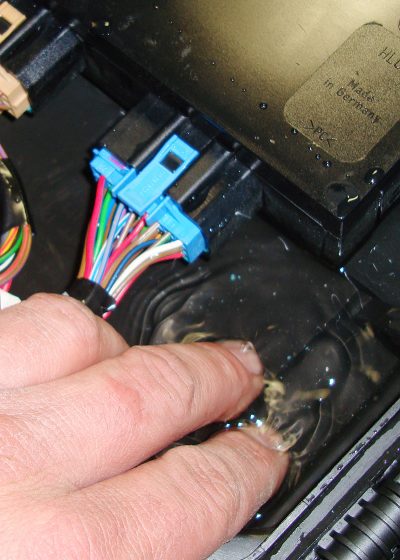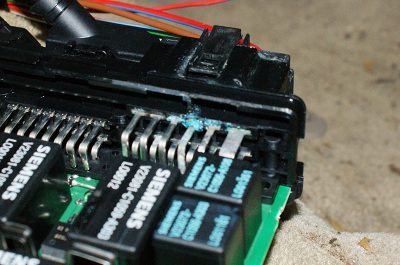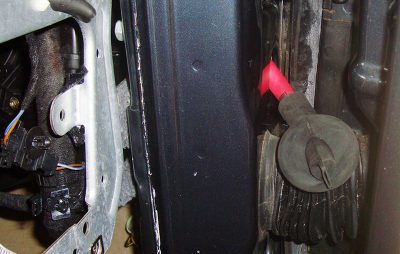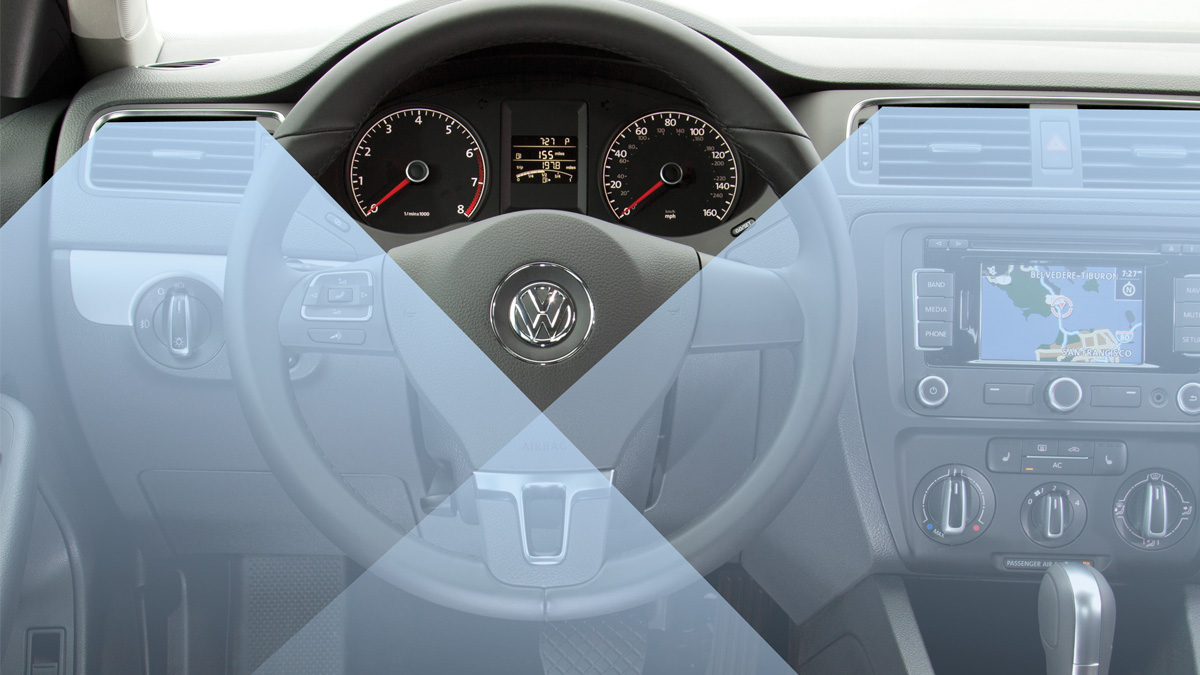Computer control of simpler electronic controls has added a tremendous amount of flexibility and features to comfort systems, but are we as comfortable when the system needs to be repaired?
How you feel about progress depends on which side of the technical-knowledge fence you’re on. Some shop owners and technicians love it — others hate it. What happened to the days of relays and switches? Well, simply, they’re gone, and for some good reasons.
Modern European vehicles are marvels of technology. They have multiple networks and gateways to link the networks. If individual wiring were to be used in place of networks, it would add a significant amount of weight to the vehicle, take up valuable interior space, and it would be harder to diagnose/repair wiring problems. Networking also allows for different features and functions with an added measure of safety. For example, if somebody’s arm gets caught in the window while it’s closing, a door control module can see the increased current draw of the motor and reverse its direction before there’s an injury. All power windows and door locks can be controlled with the push of a button. Seat positions can be memorized with presets. The features go on and on.
Need VAG

The downside of all this safety and convenience is the complexity of the diagnosis when something goes wrong. Is it the switch? Is it the control unit? Is it the network? With proper training and an understanding of how these systems work, you should be able to diagnose most problems in a reasonable amount of time. There’s no doubt that diagnoses would be very difficult without a VAG 5054, or its equivalent. Communicating with control units and looking at data inputs would be practically impossible while modules are communicating with one another. You can put a scope on them and verify that the network is up, but the actual messages must be interpreted by a scan tool. You should know the framework of the networks so you can develop a diagnostic plan. You’ll also need to do some electrical testing. Each control unit still must have power and ground, so don’t put down your digital multi-meter just yet.

The first thing you need to know is that not every Volkswagen vehicle has the comfort system. It first appeared in the 1998 Passat, and was added to the Jetta and Beetle models in 1999. It is only installed on vehicles with power windows. Those with manual windows have a central locking module with some convenience features. When using your VAG 5054 or equivalent,    enter word address 35 for the Central Locking system, and address 46 for the convenience module. This module, sometimes referred to as the Central Control Module, handles the interior lights, trunk lock, keyless entry, alarm with starter lock-out, sunroof/window/central locking signals, and scan tool communication. It communicates through what is known as the CAN-Bus.
In the case of a 2000 Passat, the wires involved are Orange with a Brown tracer and Orange with a Green tracer. They start at the convenience module and are connected to each door module. Yes, each door has an individual module.

Your scan tool never comes in contact with these CAN-Bus wires. A separate K-line connects the convenience module with the diagnostic connector. The central control module is mounted just in front of the front seat, underneath the carpet. Like the door modules, the central control module works with the Memory Seat/Mirror Control Module as part of the Comfort System. To access self-diagnostic information, you don’t look in the convenience module. Instead, you enter Seat Adjustment Driver’s Side    directly using address word 36. For the seat adjustment module, all switch inputs, and seat and mirror motor controls are directly wired to the seat adjustment module. They communicate, along with the driver’s door module, through a separate A-Bus. This only relays this information to the central control module through the A-Bus. When the ignition is switched off the driver’s door module puts out the command to go into sleep mode. Only the anti-theft warning light (controlled by the driver’s door module) and the keyless entry antenna (controlled by the central control module) are still active.
Functional testing

Battery draw is now reduced to acceptable levels. If there’s an overnight battery drain, you may want to look into the driver’s door and central control modules first. The driver’s door module is looking for all the doors, trunk and hood switches to indicate closed before sleep mode is activated, so make sure all of these switches are working. You can check them manually, but door panels will have to be removed. It is much easier to look at measuring blocks to observe the switch states. The central control module stays active for about 10 minutes except when a door is opened, and then the system starts to go to sleep. These systems have a lot of features, and you’ll find some of the best testing you’ll be doing will be of the functional variety. Functional testing is simply operating all of the inputs and seeing what works and what doesn’t. How is functional testing going to help you?
Let’s look at the power window features of the comfort system. Part of it is how all of the vehicle’s windows are controlled from the driver’s side door switch. If you unlock the driver’s door either that door will unlock or all of the doors will unlock, depending on the coding of the central control module, but more on that later. Insert the key and unlock the driver’s door. If you continue to hold the switch in the unlock position, the driver’s window should move in the open position. This means the key unlock switch is sending a good signal to the driver’s door module. Hold the unlock position even longer and all of the windows should start to move down. If they don’t, you know there’s a problem with the CAN-Bus. The same can be said for the lock position except all of the windows will close. If all but one or two windows go down, you know you have a problem with those individual door modules or components. Functional testing is merely observing what is working and what isn’t.
If the driver’s window did not go down, you may have a bad key switch. At this point use your VAG scan tool (or equivalent) to monitor the door key switch input. If you see it does not function properly, you now have a good reason to remove the door panel and check the switch electrically. You may have a broken wire or a bad switch in the locking latch assembly. If the driver’s door window went down, but the others did not the CAN-Bus may be down. You can watch these signals in the convenience module (word address 46). If the measuring block data is indicating the switch is working in the door module, but not the convenience module, you may have problem in the wiring. Check the door jam first — since these wires have to bend during opening and closing they are a likely trouble spot. If the wiring is good there, the next stop should be the convenience module itself.
Central control

While scan data is a tremendous time saver, you cannot over look the need for electrical testing. The central control module is the brains of the operation. You can perform a lot of electrical testing right there. By moving the driver’s seat all the way back and removing the plastic rocker panel cover, you can reach under the carpeting and remove the convenience module housing. There is enough wiring slack to pull it out from underneath the carpet. Look at the electrical connections. You can use a lab scope to see if the CAN-Bus signals are making it to the module. These are redundant signals, so you will see CAN-High and a CAN-Low that should mirror each other. If the module’s connectors are corroded with green copper oxide and it’s sitting in a pool of water, you’ve probably found the source of the electrical problem.
On vehicles with sunroofs, the drain can get clogged or come out of its rubber grommet mounted in the “A†pillar. This will allow water to find its way to the floor pan area. You may also have a leaking door seal, or possibly the owner left the door open or the window down while it was raining. Either way, you will have to determine if the control unit is salvageable. The connectors and electrical terminals are available from your Volkswagen dealer, so the harness can be repaired if necessary. Chances are if the control unit is water-damaged there will be other symptoms. The central control module controls many items listed earlier such as starter lockout, trunk lid opening, etc. You should perform more functional testing to verify whether or not the convenience module is bad. What other systems should you test before condemning and module? Interior light control and keyless entry systems seem like good choices.
Interior lighting is totally controlled by the convenience module. If the interior light switch is turned to the door position, the lights will stay on for 30 seconds after keyless entry, or the door switches indicate unlock, the door is opened by means of the inside handle, or the ignition key is removed. The lights will shut off when you close and lock all of the doors. If the interior lights are switched on, the convenience module will shut them off in an hour to save the battery.
Lock it
Keyless entry is also part of the central control module. The antenna runs along the bottom of the door sill and goes directly into the convenience module. When the keyless entry buttons are activated to lock the doors, they should lock, open windows and sunroof should close, interior lights should go out, and the alarm should be armed. There is a button to open the trunk or rear lid. Pressing “Unlock†will disarm the alarm, turn on interior lights, and open windows as mentioned earlier.
The central locking system is also a major player in the comfort system. Keyless entry transmissions go directly to the convenience module. Key switch input signals go directly to the driver’s door module. Either way, these lock or unlock commands pass through the CAN-Bus and are sent to the other door modules. The alarm will also be activated or deactivated if locked or unlocked respectively. Individual doors can be locked from the inside handle, but the driver’s door module can lock and unlock all the doors by means of switch input. Either through “Adaptations†or “Coding†you can change the way features work. For instance, with Selective Locking only the driver’s door is opened with the door switch or keyless remote. If selective locking is not coded into the module, then all of the doors will lock and unlock at the same time. Coding will need to be performed on a new central control module.
Coding
What is coding?    Each control unit can be used in several different models, and these vehicles may have had different equipment installed at the time of production. Even though these features are available, the customer may want various functions to react differently. For this purpose we have control unit coding. Through your VAG scan tool you can enter coding word address 07. The coding number is going to change depending on what features you want turned on and off. Each feature has its own number. By adding up these numbers you can only come up with one possible total for active features. When the convenience module sees this specific number, it knows what features were turned on and which ones were turned off. You can turn on or remove specific features only by adding the features that were turned on. You cannot subtract these numbers since you do not know which features were turned on and off to begin with.
Knowing how these systems work is half the battle in diagnosing body control system problems, and will allow you to use your scan tool more effectively. It should give you an indication of where the problem is. This way, you only remove the body panels you need to access for electrical testing. This will save you time and your customer money. We can’t think of a better way to do business.
Download PDF




0 Comments